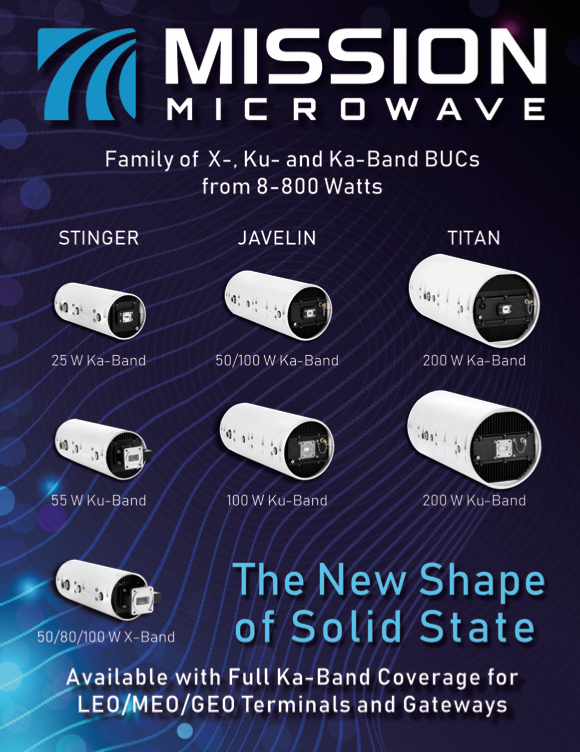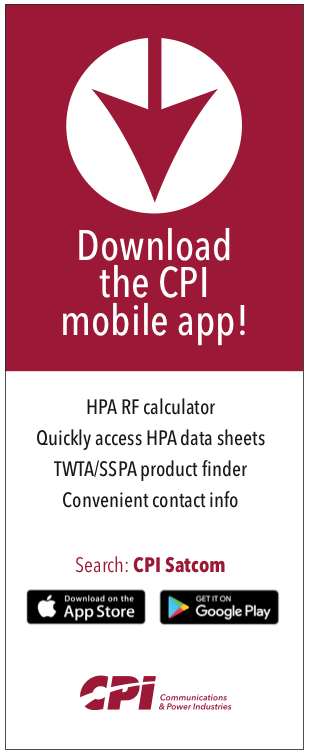Ben Griffin has more than 20 years’ of experience in In-Flight Connectivity (IFC), with notable contributions to companies such as ARINC, AeroMobile, Inmarsat and currently OneWeb. Ben’s career in IFC has developed alongside the fast-paced change from narrow band to true broadband connectivity — now at OneWeb, he is responsible for delivering fiber-like connectivity solutions to aviation customers in all parts of the aircraft, passengers and crew alike.
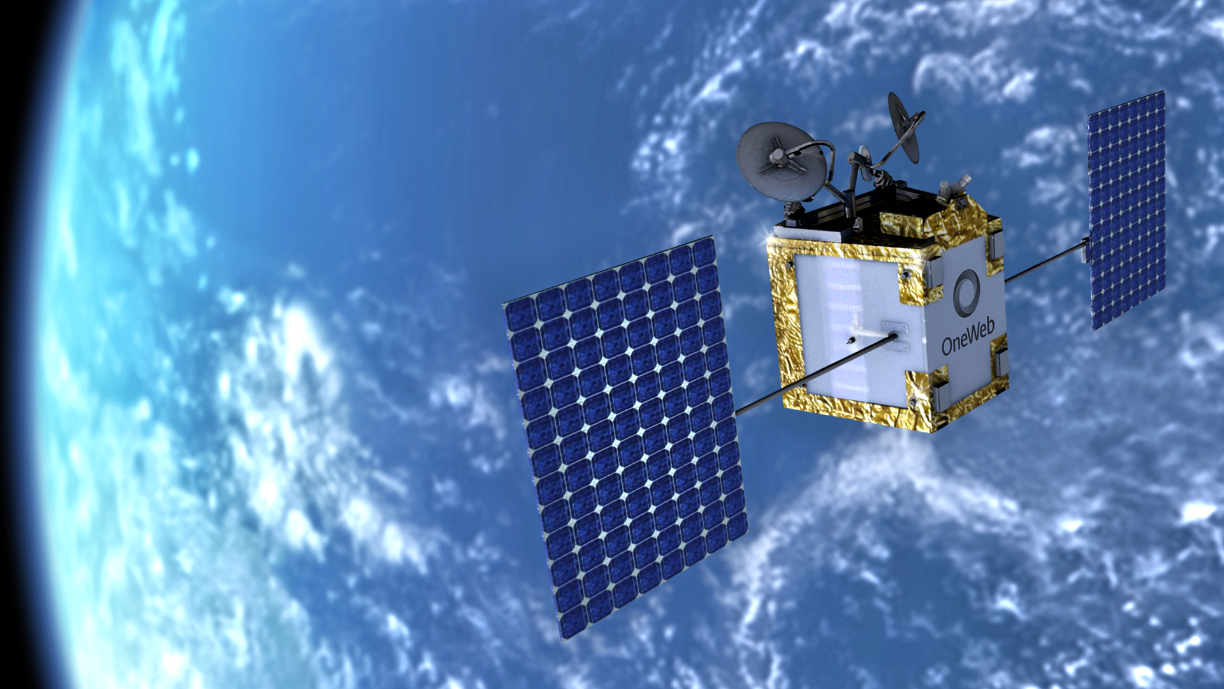
Ben brings a wealth of experience from the IFC service provision perspective, including significant satellite provider insight spanning GEO and LEO technologies. Based in the UK, Ben has also enjoyed 13 years in the Middle East, giving him a broad experience of business in MEA and APAC regions.
Mr. Griffin, what initially drew you into the SATCOM world to start your career, and how do you feel that your specific experience in SATCOM can benefit with OneWeb? What made you decide to join OneWeb ?

Ben Griffin
Ben Griffin
I did not start my career in satellite at all. In fact, I quite stumbled into it. My career started in air traffic control a long time ago and evolved over the years into more communications-related roles, the first being with ARINC, which is now part of Rockwell Collins, doing flight deck communications.
From there I progressed into the cabin, trying to remain in step with mobile telephony and GSM as these technologies rolled out in the terrestrial world. I watched how these applications were changing behavior and interactionsn on the ground and that sparked my interest as to how it all could relate to the aircraft cabin.
We were tinkering with things like seatback SMS and emails, ideas which, at the time, seemed pretty-cutting edge; now, they seem a bit archaic. However, ultimately, that path led me to AeroMobile, which was installing GSM pico-cells to work on airplanes. That work lit the fuse for some groundbreaking applications,band although it was backed by Telenor and ARINC, AeroMobile had a real startupbmentality, which I also enjoyed.
It wasn’t until I joined Inmarsat that I truly came to grips with what the satellite world was all about. At the time, Inmarsat was at the top of the SATCOM food chain, certainly in terms of the provision of data. With those satellites providing coverage to the inflight connectivity industry and beyond, this provided me with a different perspective .
While I enjoyed myself immensely and learned a great deal there, I also felt that we were only scratching the surface of what satellite communications could achieve. Closing the digital divide for businesses and communities — helping people realize their full potential is something that satellite communications can address.
That was when I started noticing Low Earth Orbit (LEO) satellite companies coming to fruition; OneWeb was one of those early players that caught my eye. Here, I thought, was an opportunity to shake things up, to really explore the boundaries of not just inflight connectivity, but also the satellite industry as a whole, and have a bit more license to do some incredible things, to reach more of the four billion who still remain unconnected.
OneWeb is where I thrive on creativity and can be disruptive. The OneWeb belief that connection everywhere changes everything and bridging the digital divide really speaks to me.
You mentioned the creativity, disruption and rapid execution that come from being part of startup. Startups also come with challenges and certainly this is no exception. You’ve had a bankruptcy. A Russian invasion of Ukraine that waylaid launches. Certainly, there have been some speed bumps along the way over the few years of OneWeb’s evolution. But the constellation is growing again. Can you talk a little bit about some of those challenges and where you’re at right now? And the overall timeline of bringing the network online?
Ben Griffin
I think the description of speed bumps is quite apt. They’ve been bumps, not brick walls, and we’ve been able to get over them. The startup mentality, the agility and creativity to get things done, really helped on this front. We do not suffer from any ego to think we cannot go to SpaceX and see if they can help uswith launches, which is exactly what’s happening in late 2022 and into early 2023.
We also launched in mid-October from India, partnering with NewSpace India Limited using the LVM3 rocket. This was the first heavy lift commercial launch for that rocket and that opportunity was enabled by our flexibility and our willingness to collaborate with a broad range of partners. We truly believe in developing a satellite ecosystem by the industry, for the industry, as we know that helps everyone, including pushing OneWeb closer to its goals.
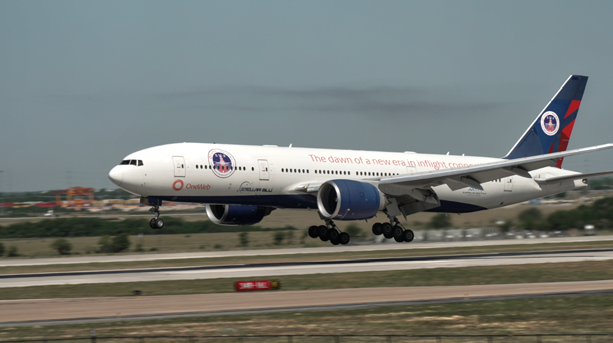
OneWeb IFC terminal test flight. Photo is courtesy
of the company.
These are new, groundbreaking efforts, which reflect that entrepreneurial nature of the operation. Solving problems can be fun if that’s an attitude your organization embraces. We have built teams with the right kind of people who possess the correct mindset to say, “Okay, well here is a problem. Let’s deal with it.”
And that is very cool.
As of the October launch, we now have more than 70% of our satellites on-orbit and successfully communicating — those satellites are providing service above 50 degrees north latitude, as of this writing. We’re running smoothly, most notably in Alaska and Canada.
We have another launch before the year’s end, our first SpaceX launch, then three more launches early in 2023, so we expect to be up to the full complement of satellites on-orbit next summer. We are also working to complete the rollout of the ground stations, as well. Despite the road bumps we have had along the way, we are so close to full constellation operation. Such is a huge credit to the intelligence, resourcefulness and resiliency of our team.
A big part of the OneWeb mission is to enable connectivity across a broad range of use cases, enterprise backhaul, mobility, government, and more. What are some of the key factors that are driving that goal and how does that range of offering requirements drive what you’re doing with the constellation?
Ben Griffin
We are working with numerous, world class terminal providers to make certain that the equipment that we put on any asset is fit for purpose, whether we are putting terminals on maritime vessels, aircraft, vehicles, or buildings in the most remote parts of the world. We aren’t trying to re-invent the wheel. We’re finding partners who are close to their customers and have done it before. If they haven’t done it before, we know they are great at doing something similar. We’re excited to be harnessing all this partner expertise and bringing them into our ecosystem.
Segments such as enterprise markets and backhaul are straightforward to us in terms of delivering and leveraging high-bandwidth and low-latency. Maritime, aviation, and land mobility are different and those segments require a more complex approach, as the satellites are moving extremely fast and, in many cases, so, too, are the mobile assets.
We see a huge amount of demand in the market not just for more capacity (there is always a requirement for capacity), but just as importantly, the extra reach and coverage that we can get with Low Earth Orbit satellites. We deliver full coverage at very high latitudes and all the way to the poles in both directions.
We also offer lower latency, which we talk about quite a lot. I don’t think many people necessarily see the significance of this, but I’m confident we’ll display and illustrate that as we we push forward. Cloud services are a good example. These typically require 200 to 250 milliseconds of latency. As we’re delivering below 100 milliseconds from our LEO constellation, this means we can support it much more efficiently with LEO services
We see different use cases, different applications, wide geographical reach and opportunities to serve new customer’s requirements more optimally than services today, But there’s still space (excuse the pun!) for everyone to come and play… and enjoy the success.
We’re also taking a deliberate approach to our constellation deployments. Initially, the goal is serving the established coverage footprint. Then we can deploy the fixed applications, just because they are more straightforward in terms of the connectivity. The mobility aspects of the network will come in two phases, with maritime just ahead of aviation mobility. Both of those will occur in 2023.
Expanding on the markets available, and certainly respecting the fact that defence and governments tend to keep a low profile, what type of service is OneWeb targeting in those segments?
Ben Griffin
Satellite presents some great opportunities, particularly in times of crisis. It is typically the first means for restoring communications after a natural disaster, for example. Enabling humanitarian first responders to communicate or aid workers to coordinate relief is a massive challenge. With significant capacity and low latency, we foresee an opportunity for the OneWeb constellation to support not just basic communications, but telemedicine operations or similar functionality as well, allowing even greater support of relief organizations.
I simply don’t think there’s enough capacity in the world today, or even lined up, to satisfy governments globally for what they want to do from a defence perspective, or even civil government uses. Delivering capacity to that network and low latency — coverage which we’ve never seen before in terms of broadband coverage all the way up to the poles — enables some specific use cases. We’re really excited to see how the boost in network performance OneWeb can deliver brings these improvements to life.
You mentioned earlier, in talking about bringing the different segments online, the fact that you’re working with top tier partners, specialists around the world. Can you give us a little bit more insight on your distribution and terminal hardware partnership strategies and how you’re using those to support the growth of your customer base and the overall operation?
Ben Griffin
When we dive into each of our verticals, we really examine what is important to those customers. What do we need to deliver? What are the use cases likely to be required?
The next questions we ask are, who are the distribution and technology partners most likely to be able to help us to do that? And who can help us deliver not only today to get the network moving fast for customers, but can also support us going forward to help it evolve?
We have developed fruitful relationships with the likes of Intellian, Hughes, and Ball Aerospace for the arrays that are being integrated by Stellar Blue, Kymeta, Satixfy, Satcom Direct and others. We want to leverage the experience of players like these who each have decades of success in this field.
This goes back to our mantra of developing a solution by the industry, for the industry. We want to be disruptive, but in a smart way. It makes great sense to develop something together with the industry, that the industry actually wants at the end.
We’re picky about how we choose to be disruptive. I don’t think certain elements of the technologies are the best place to do it, including antenna platforms.
Let me take aviation as an example. Knowing how LEO operates differently and how we can always look straight up to the sky and we can always see a satellite means that the electronically steered array (ESA) types of terminals deliver a much, much more efficient connection to our satellites than mechanically steered arrays.
That’s good news on a variety of fronts. ESA technology is more reliable, with no moving parts, meaning much greater time between failures by orders of magnitude.
Additionally, we consider that in maritime where parabolic antennae are well used. However, we are seeing significant interest in now swapping to ESA technologies. The reliability and performance concerns are different there compared to aero, but still critical to success.
It sounds as though the first-generation constellation is really coming along nicely, with global services starting during 2023. What does the future look alike beyond this first-generation constellation? What are some of the operational differences and upgrades that the second generation of satellites will offer? How will it integrate into the Eutelsat GEO constellation with this proposed merger?
Ben Griffin
First and foremost, I should point out that Gen1 is going to be around for some time — we are absolutely laser focused on getting Gen1 into space and operating to provide all of the benefits I mentioned earlier. That said, we’re already thinking about Gen2, and how we can continue to offer the very latest in LEO technologies.
I think of the first-generation constellation as delivering on a global footprint. It gets things going in critical markets that we talked about earlier and Gen2 layers come in on top of that with a huge bandwidth capacity boost.
With respect to how it integrates with the Eutelsat network, the merger is in early stage of the process. It would be somewhat premature to discuss integration at this point. The OneWeb story is very much about LEO and hybrid solutions making the most out of the available technology, to deliver quality internet connectivity everywhere on earth. I’m certain there will be ways in which OneWeb will integrate with GEO networks, whether that be Eutelsat, or others, to accomplish that.
You’ve been in this industry a couple of decades now. Is there a particular project or projects you’ve worked on that sort of bring a smile to your face when you think back to them or a sense of satisfaction and what you’ve accomplished?
Ben Griffin
One that springs to mind goes back to my AeroMobile days and seeing that first flight go live. We were always told that you couldn’t operate mobile telephones on an airplane and we went through a great deal of work to disprove that statement. We were, quite literally, strapping 300 mobile phones to a board and walking around an airplane to make certain there was no interference. That was kind of fun!
It was also a little jarring, when we did that first flight. For us, it was a huge success, but no one using the system was that amazed. It was just perceived to be normal, which was frustrating for the team who had worked so hard to bring the technology to life.
This goes back to why I find the industry so interesting. We are enabling new services so that the new generations coming through are just able to do what they’re so used to doing anyway somewhere else. It is completely unremarkable. But when you realize how much work has gone into it, you kind of want to shake people and say, ‘That took three years to do!’
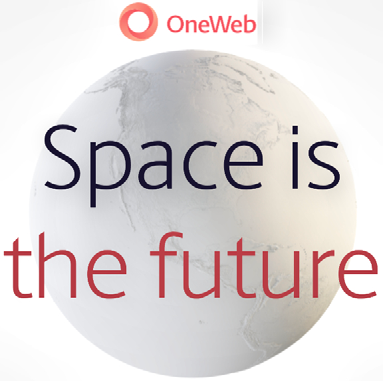
Another element that I enjoy, as I am wandering around airports so frequently, is just looking at the tops of aircraft and seeing the radome humps on the top them and thinking, you know, I had a part — in many cases, an integral part — of making sure that radome got on that aircraft. Plus, I know exactly what it does.
Similarly, wandering around the aircraft in flight and seeing people connected or watching a live football game or whatever, gives a sense of renewed belief that what we’re doing at OneWeb has real value. Going through the rest of this decade, ubiquitous connectivity is going to be more and more just a normalized thing. Getting to be part of that new industrial revolution, in terms of connectivity from the early days, is pretty rewarding.
Pull out your crystal ball and take a look into the future. Where do you see both for OneWeb and the industry in general in 2023 and beyond sort of near future? What challenges and changes do you see coming along?
Ben Griffin
For OneWeb, completing the launches, getting the constellation completed, getting all the services online in every vertical is a challenge. However, it is one that we are well capable of achieving. Getting our first terminal certified is well on track, but it will also be a wonderful milestone to accomplish for OneWeb.
Everywhere I travel there is real interest and real demand for something else, a new paradigm in connectivity. That’s not to say that the existing stuff isn’t good. It is good. But I think the IFC world wants to get really good, or even excellent. I don’t think that’s ever really been achieved consistently, globally.
After the pandemic and OneWeb’s Chapter 11 (bankruptcy) it is hard to tell what other factors might change things. But one thing I do know is that OneWeb is well placed and has all the correct people to overcome any more speed bumps that come along the way..
I’m very much looking forward to continuing this journey and and disrupting the industry in a responsible way. I think that is the key to being successful here. We’ll continue to work with exceptional partners and listen to the industries we’re active in, to make sure we deliver solutions that they want and need.
We’re on the precipice of a future where LEO connectivity can truly bridge the digital divide and change peoples’ lives all for the better.
oneweb.net


